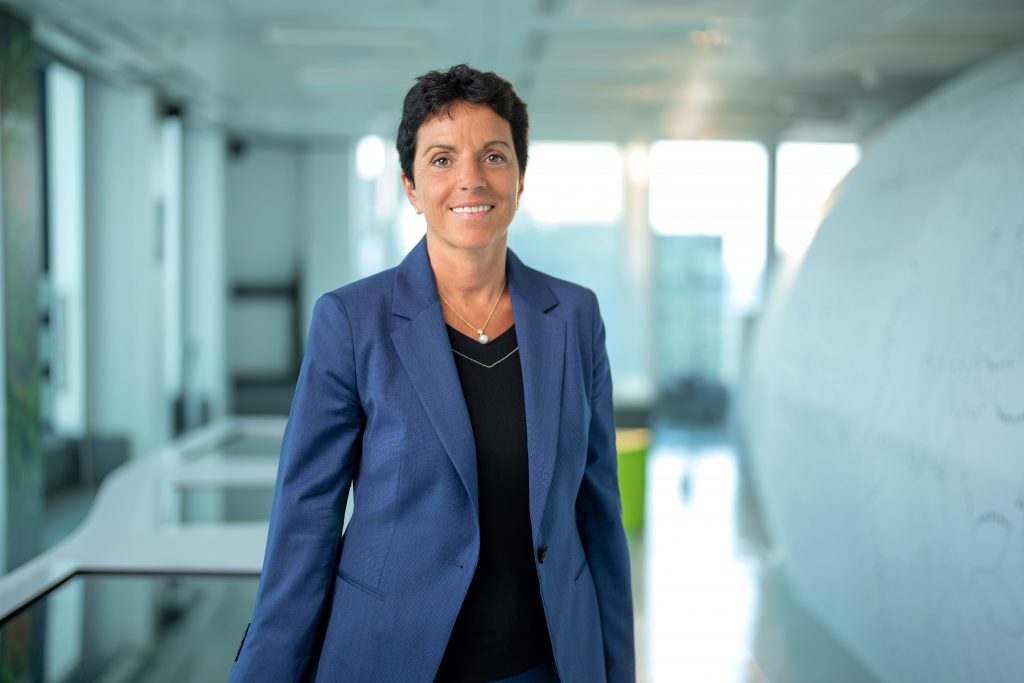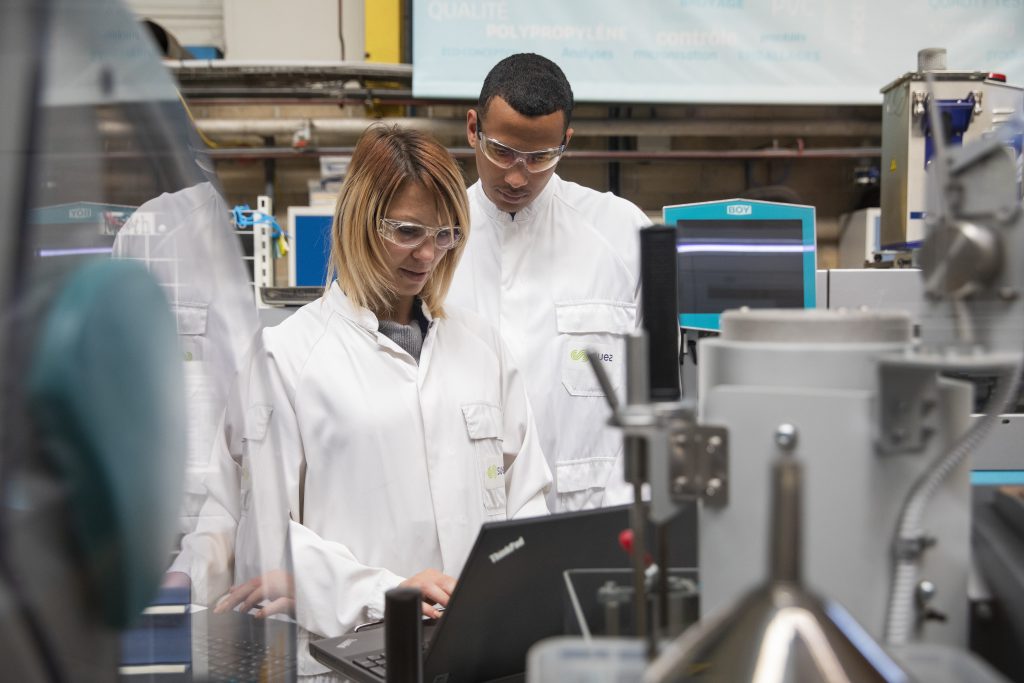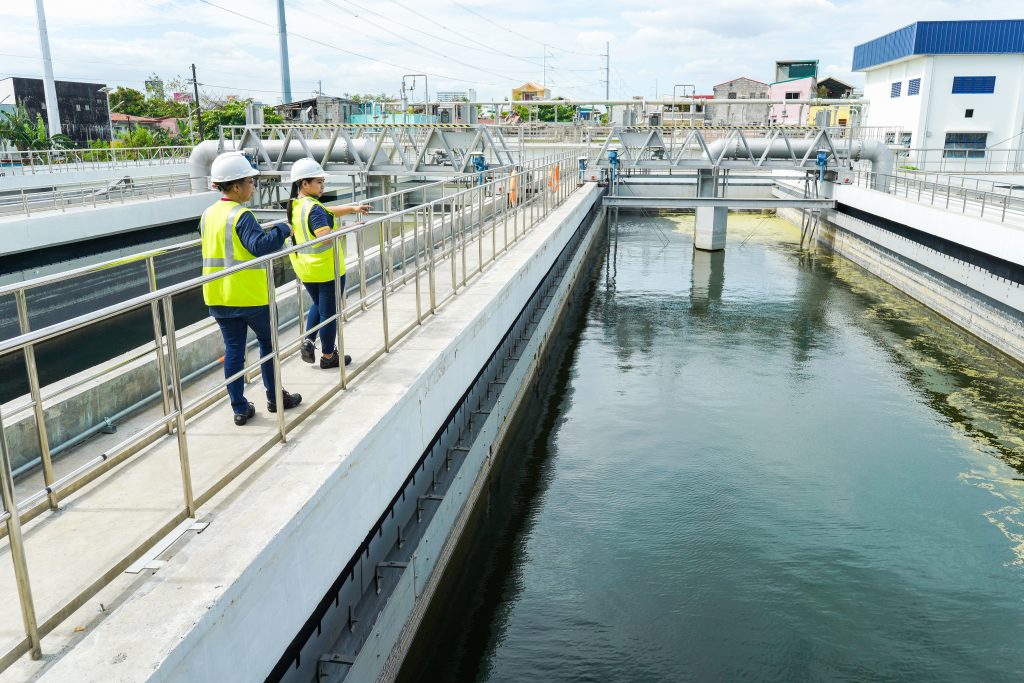SUEZ: Improving Quality of Life through Water Circularity, Innovation and Transformation
SUEZ is one of the global leaders in the water and waste management sectors. The company has provided essential services to protect the resource and improve quality of life for over 160 years. With operations in 40 countries and 40,000 employees, SUEZ offers expertise in developing infrastructure projects, covering the entire water and waste value chain.
With a strong commitment to environmental sustainability, SUEZ has been pioneering efforts in water circularity and innovation, transforming the way they manage and conserve the water resources. Asian Water had an opportunity to talk to Sabrina Soussan, Chairman and CEO of SUEZ and one of the leading women in the water industry, recently on SUEZ’s presence in the water management industry, water circularity, digitalisation and the challenges and opportunities in the industry.

Asian Water: SUEZ is one of the leading players in the water management industry. Can you briefly describe the state of the industry, specifically in the Asia Pacific region, at the moment?
Sabrina: With more than 160 years of history, SUEZ has been providing its customers with innovative and resilient solutions for water and waste services. Asia is a strategic region for SUEZ. We have a historical presence in this region, that started some 70 years ago. Today, we have more than 6,500 employees across the region. Together with our local partners, we provide water and waste management services to more than 25 million people and 20 industrial parks in Asia.
In Asia, the evolution of the water and waste industries are being driven by a number of challenges, including climate change, rapid population growth, increasing demand for natural resources, rising expenditures and heightened community expectations. These challenges are becoming particularly pressing in the Southeast Asia region.
Solutions already exist to support municipal and industrial players in meeting these challenges. We can, for example, harness the potential of both established and cutting-edge solutions, including smart metering, AI and digital technologies, to enhance water efficiency and network performance.
In the Philippines, our Calawis Water Treatment Plant, powered by SUEZ’s transportable and ready Decentralised Compact Units (UCDs®) solution, provides stable drinking water to communities. And most recently, we signed a contract for wastewater treatment with Maynilad to clean Manila Bay and improve the residents’ quality of life.
We also develop nature-based solutions to complement technological solutions. In Shanghai Chemical Industry Park, China, we introduced our patented Dragonfly Zone (Zone Libellule®) solution for the construction of artificial wetlands. It allows us to leverage on nature’s purification abilities to further treat industrial wastewater and provide ecological habitat for local flora and fauna.
In the context of managing environmental resources, SUEZ brings a diverse portfolio of solutions that enable resource optimisation and protection, reinforce agility and resilience and contribute to a circular economy.
Asian Water: SUEZ has shown a strong commitment towards environmental sustainability through its efforts in water circularity and innovation. What are the initiatives and strategies that the company has undertaken to achieve its sustainability objective?
Sabrina:The water industry has a central role to play in adapting to climate change. But it can also make a powerful contribution to mitigating climate change.
First, by reducing its own GHG footprint. At SUEZ, we are accelerating on this topic with our 2023-2027 Sustainable Development Roadmap. We took the commitment to reduce emissions from our water activities by almost 40% by 2030. We can act on several levers, for example: improving the operational efficiency of treatment processes, optimising the energy consumption of pumping systems, strengthening our renewable energy supply contracts and so on.
Second, we can become a true resource provider for territories, by valorising all the value contained in wastewater: both in terms of secondary raw material as well as local and sustainable energy.
For example, in Nice, France, we are building a major wastewater treatment plant. It will produce biogas from the sewage sludge and recover calories from the treated wastewater. The installation of photovoltaic panels will enable the plant to produce 475MWh of electricity per year. The plant will be a real “resource plant” that will produce four times more energy than it consumes today.
Asian Water: As we are aware, digitalisation is developing at a very fast rate. Taking that into account, how is SUEZ coping with the digitalisation development?
Sabrina:Through our expertise and digital technologies, we can support local authorities in meeting their water challenges. To tackle water scarcity for example, digital solutions can be a strong lever to save water.
Smart metering solutions enable users to monitor their water consumption and to receive advice on how to use water more efficiently. Because we can only improve what we can measure.
We can also improve networks performance thanks to digital solutions. The water industry is relatively mature in terms of AI usage. There are solutions using artificial intelligence, algorithms to better detect abnormal situations in real time and locate leaks.
For example, in Singapore, we have been a long- standing partner of the Singapore’s Public Utilities Board (PUB) in managing, conserving and digitising the country’s water assets. Recently, we signed another contract to provide PUB with an innovative Smart Water Grid Analytics Platform that can detect and localise water quality and/ or pressure issues for its water supply network, reinforcing PUB’s network operational efficiency and resilience.
Asian Water: How active is SUEZ’s research and development programme? What are some of the technologies and innovations that have been developed by SUEZ?
Sabrina: Innovation has always been part of SUEZ’s DNA. We plan to increase our budget dedicated to R&D and innovation by 50% between 2022 and 2027 to stay at the forefront of environmental innovations in areas such as preserving water resources, combating pollutants, recycling, producing energy from waste and reducing our own and our customers’ carbon footprint.
Taking water quality for example, we can see that PFAS are a growing issue. It is a topic we work on since a long time. From 2018, SUEZ has launched a R&D programme, led by our global innovation centre, CIRSEE, to analyse the occurrence and treatment of PFAS in water.
In Asia, we have set up eight R&D centres across the region to provide innovative solutions for water and waste management. We also work with partners to participate in external innovation platforms to foster an open innovation ecosystem.

SUEZ employees working at the Paris-based International Water and Environmental Research Centre (CIRSEE) ©SUEZ_William Daniels
Asian Water: Currently, digitalisation in water conservation is “gaining popularity” in the industry. How does SUEZ utilise its technology in this area?
Sabrina: AI is an opportunity for the water sector to accelerate its transformation and tackle its main challenges: it enables us to detect leaks in networks, identify them precisely so that we can intervene quickly and reduce loss volumes by up to 25%. In water production systems, AI can reduce electricity consumption by up to 20%. In wastewater treatment, AI can also reduce energy consumption by 15 to 25% and the use of treatment products by 20 to 30%.
We are also working on digital twins of water and wastewater infrastructures to optimise their maintenance. This can support their adaptation to the increasing number of extreme climatic events, for example floods. AI can also help to protect the environment by reducing the volumes discharged into the natural environment by up to 50%. We support the Singapore’s Public Utilities Board (PUB) in anticipating flash floods and managing water quality, through the Catchment and Waterways Operations System to optimise the nation’s water resource management.
There is also a tremendous potential in generative AI to improve customer service. The use of chatbots and virtual assistants would enable agents to concentrate on resolving the most complex tasks.
I’m convinced that AI will continue to accelerate the development of solutions to help our customers deal with climate change and the increasing scarcity of resources.
Asian Water: Every new development and technology comes with its challenges and opportunities. What are the challenges that SUEZ faced in its efforts in water circularity and digitalisation and how does the company seize the opportunities in advancing them within the water industry?
Sabrina: The consequences of climate change on water resources are already visible, with impacts that go far beyond the production of drinking water. Energy production, agriculture and industry are all dependent on water supply. The availability of water resources is therefore key for the economic attractiveness of a region.
I see three levers to move from short-term resource management to a more structural management:
The first one is “save water”. I mentioned earlier how digital solutions can be used to save water.
The second one is “recycle water” by reusing treated wastewater, for both conventional and industrial applications. Water operators have longstanding expertise in this technology.
During the Singapore International Water Week, we signed an agreement with our partner from Shandong Province in China where SUEZ will invest, build and operate an industrial wastewater treatment plant in Jining’s New Materials Industrial Park. This project aims to achieve 100% reuse of treated industrial wastewater, supplying an annual alternative water production of more than 3.6 million m³, equivalent to the volume of around 1,500 Olympic-sized swimming pools.
The third key idea is “increase water availability”, with seawater desalination for instance. I’m a strong believer in this solution. We have an historical expertise in that field, and solutions that are today really mature. There is a strong development potential for this solution, to support the resilience of communities.
In Taiwan for example, climate change and extreme hydrological events have an impact on the water supply, which mainly relies on reservoirs fed by rainfall. With the expansion of semiconductor factories in the Hsinchu Science Park, the demand for water is set to surge. The new desalination plant in Hsinchu that SUEZ is going to build with our local partners will be able to produce 100,000 cubic metres of drinking water per day and benefit around 1.6 million people and the local industries.
In the Philippines, SUEZ and our local partner will build a cutting-edge seawater reverse osmosis desalination plant in the area of Metro Iloilo to address the region’s critical drinking water shortage. Poised to be the largest facility of its kind in the Philippines to produce approximately 66,500 cubic meters of water daily, the new plant will supply drinking water to nearly 50,000 households and the industrial water needs of a nearby power plant.

SUEZ designs and builds Cupang Sewage Treatment Plant in the Philippines
Asian Water: With all the rapid development that is taking place in the water industry, how do you view the future outlook of the industry and how will SUEZ play a role towards that future?
Sabrina: In developing countries, the need for water and sanitation is increasing. Mature markets are also suffering from the effects of climate change, requiring measures to improve the conservation of water resources.
In general, there will be an increased need for technology and innovation, and this is where companies like SUEZ can play a key role.
Asia is a strategic market for SUEZ. Today, SUEZ has a turnover of nearly EUR9 billion. We aim to generate around 40% of our revenue internationally by 2027. The Asian market has a key role to play in our international development and growth strategy. Our goal is to expand further by joining hands with our local partners and clients across the region.
SUEZ has a growing project pipeline in Southeast Asia thanks to our historic presence in this region, the rising demand for environmental improvements, and the need to supply top-class water and waste services to its growing populations. We will keep concentrating our efforts on Indonesia, the Philippines, Vietnam, and of course, Singapore. We have numerous projects in these nations, managed by strong local teams.
Asian Water: SUEZ’s participation in events like SIWW2024 demonstrates its commitment to the water industry. How does SUEZ anticipate leveraging this platform to showcase its latest innovations and solutions, and to engage with industry stakeholders for future collaborations and advancements?
Sabrina: Water scarcity is a global challenge. Water is also at the core of the realities of climate change. The impacts of climate change on water resources are already obvious. They go far beyond producing drinking water: energy production, agriculture and industry are all dependent on water supply. That’s why having enough water is so important for a region’s economic appeal, especially in Southeast Asia. We need sustainable practices, better infrastructure, and international cooperation to tackle this issue. We should also think about reusing water and finding new sources when the conventional solutions are no longer sufficient. This event is a great chance for us to collaborate and make things happen together.
Our participation in SIWW2024 demonstrates our commitment to the advancement of the water industry. We aim to use the recognised events and platforms to not only showcase our cutting-edge innovations and solutions, but more importantly, to engage with industry stakeholders and our customers. This interaction is vital as we explore future collaborations that will drive advances in sustainable water management and address global water challenges.
Asian Water: Lastly, what are your hopes for SUEZ in the future?
Sabrina: We will keep supporting our customers in their efforts to preserve water, increase waste recycling, and reduce the consumption of natural resources through a more circular economy. Our sustainability commitments are a powerful driver for SUEZ employees. I’m looking forward to seeing this roadmap, which is rooted in a purpose of making key contributions to society, progressing step by step. I’m convinced that SUEZ, through its water and waste activities, has been playing and will continue to play a vital role in improving people’s quality of life on a day-to-day basis. AW

